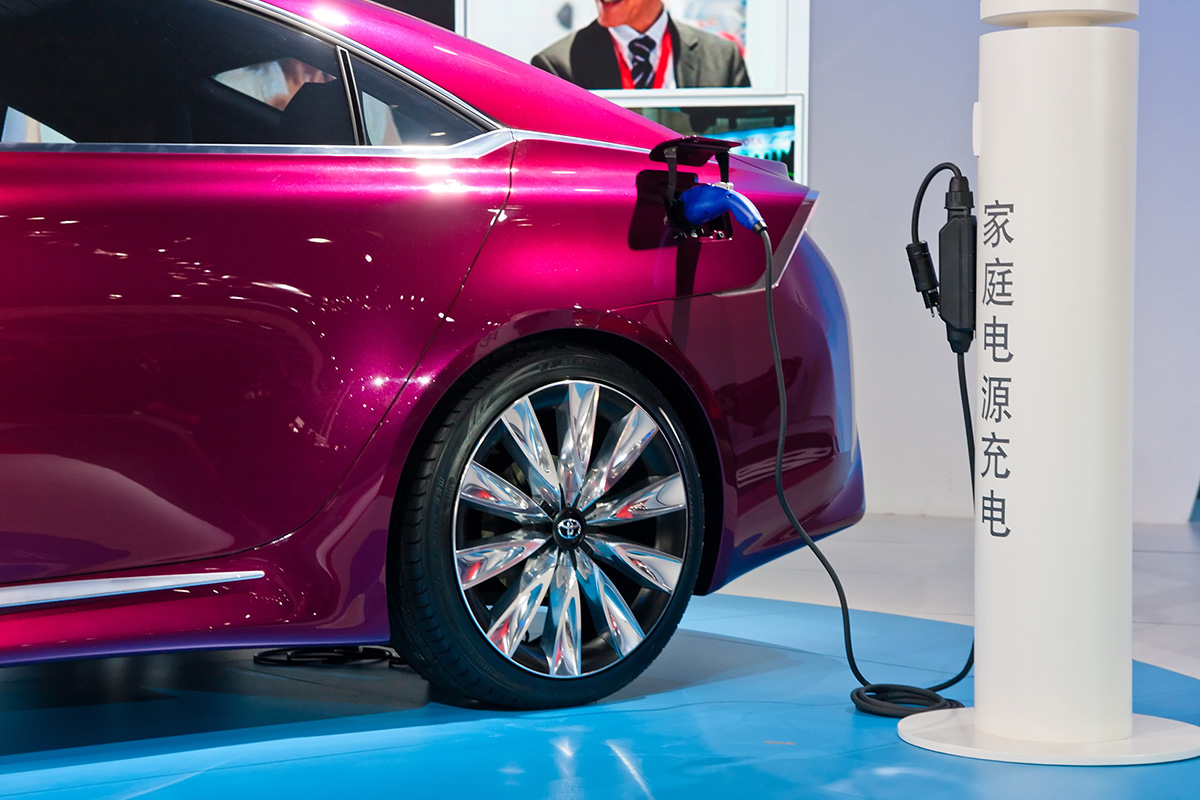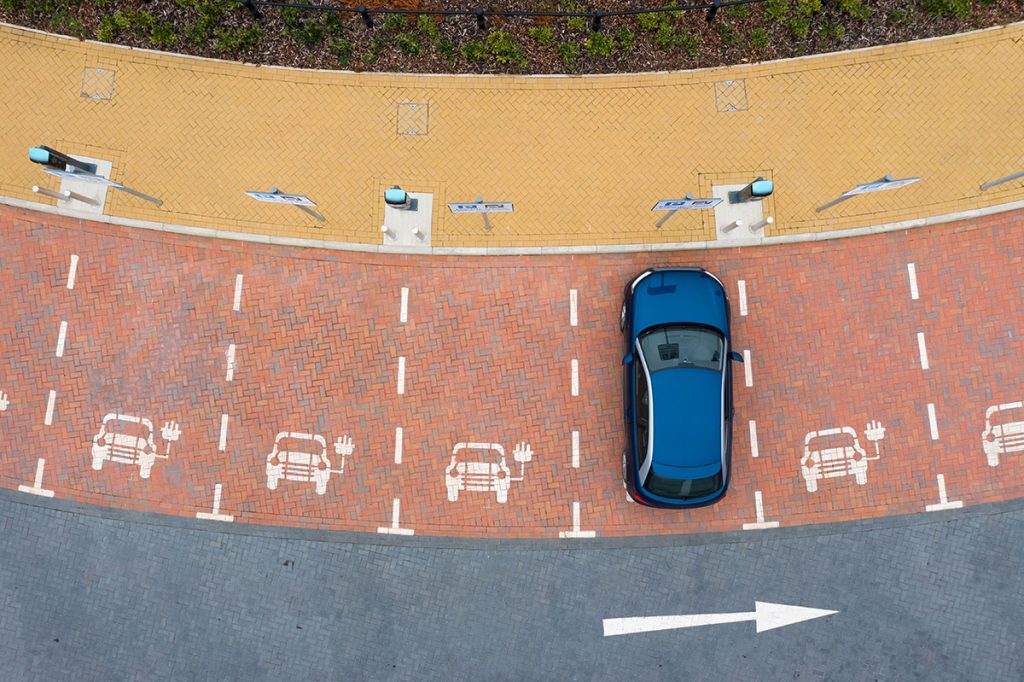
TAKEAWAYS
When it comes to the electric vehicle (EV) market, China is leading the charge ahead of traditional automotive juggernauts like Germany and Japan. The country’s new EV sales grew by 82% in 2022, comprising nearly 60% of global EV purchases. This greatly surpasses that of the United States (US), Norway and other Scandinavian nations that were early adopters of EVs.
According to a report by the International Energy Agency, over half the electric cars on the roads worldwide are found in China. The country also accounted for 35% of global electric car exports in 2022. Indeed, Chinese EV giant BYD sold more EVs than Tesla in the fourth quarter of 2023 and reported a 62% increase in EV sales for the year, while fellow automaker Geely experienced an uptick of 18%.
How did China get to this point? What did Chinese automakers do differently, and what can companies looking to scale up their innovations learn from this approach? A sizeable internal market and favourable government policies set the stage for this speedy rise. However, other nations have implemented similar policies, yet haven’t been as effective in accelerating market adoption.
Here are three key lessons from the growth of China’s EV sector. They revolve around identifying opportunities in adjacent industries, encouraging operational solutions, and doubling down on core technology.
China began its EV drive later than the US. Although both countries had similar policies to incentivise companies and consumers, Chinese companies did not play the game directly.
Tesla pursued a “big banner” approach, with CEO Elon Musk leveraging the media to establish the brand as an EV pioneer. This strategy facilitated Tesla’s entry into the California market and the swift development of a robust national and global fanbase. In contrast, Chinese automakers BYD and Geely adopted a more discreet approach. They flew under the radar, conducting quiet experiments during their early stages.
They kickstarted their EV development by focusing on adjacent industries – namely, electric buses and motorcycles – instead of targeting the automotive industry head-on. These vehicles may be less visible than cars, yet they present unique challenges that are ripe for automakers to address and helped both brands fuel their EV manufacturing strategies.
For instance, buses are heavier and carry more passengers than commercial sedans. Additionally, most buses run for about 18 hours each day, meaning they have greater battery power and storage requirements. More powerful batteries also take longer to charge.
By targeting this adjacent industry, BYD began pushing the boundaries of battery technology as early as 2009. It then used electric buses as its entry product into North American markets. It began by selling electric buses as fleet vehicles in 2013, eventually supplying them to the Los Angeles Metro system. BYD electric buses are now prevalent in South American markets.
Geely operated within another adjacent industry that presented different challenges: motorbikes, which require lighter and more portable batteries than cars. Experimenting in this area allowed the company to become a leading producer of battery technology.
By taking an indirect path, BYD and Geely innovated on the two extreme ends of battery technology, which is core to EV production.

Another reason for the success of China’s EV market is that early innovators, including BYD and Geely, collaborated with local groups to overcome operational hurdles. Government policy may accelerate the adoption of new technologies, but it does not solve existing operational challenges and often introduces new ones.
For instance, many European countries, such as the Netherlands, were quick to implement various registration tax incentives and rebates in order to encourage EV adoption. But research found that interest in purchasing full EVs remained very low among taxi drivers. A possible explanation could be the operational challenges of full EVs, which include the short driving range and long charging time. These concerns have tended to overshadow the environmental benefits and other strengths of EVs, like having a quieter engine and not requiring regular oil or battery changes.
How did China overcome these operational hurdles? A similar policy was established by the Chinese government in 2009. It offered subsidies for the purchase of hybrid and full EVs as well as buses across 10 cities, including Beijing and Xi’an. Beyond this, Chinese EV brands worked closely with taxi companies to devise operational solutions that would improve core battery technologies. As an example, EV companies didn’t merely map out the locations for charging stations but also tested various scheduling options for battery charging that matched the current performance level of fully electric and hybrid vehicles.
EVs equipped with the best battery technology can run for up to eight hours in the inner city. In China, taxi companies operating electric or hybrid vehicles typically have two fleets of cars – one for morning and one for evening. The morning shift typically ends around 6pm to 7pm, after the workday but before the rush of people heading out for the evening. This enables the morning fleet to be charged after 8pm, avoiding the window of heavy industrial power consumption. The evening fleet returns for charging around 2am to 3am, which also falls within the period of lower power consumption for a city’s grid.
This new schedule, designed jointly by Chinese EV automakers and taxi companies, not only addresses the battery constraints of EVs, but also helps reduce the pressure on and flatten the consumption curve of a city’s power grid.
Historically, European and American automakers have had a strong foothold on the core technology for combustion engines. The Chinese automotive industry fell significantly behind both regions as well as Japan in this area. But in 2002, Chinese automakers estimated that battery costs would make up between 30% to 40% of the total manufacturing cost of a fully electric vehicle. This meant that there was a window of opportunity for newcomers to leapfrog the competition by focusing on the technology that powers this central component.
Chinese companies collaborated broadly – with other automakers and technology companies – to strengthen their capabilities in terms of EV manufacturing. For instance, at the beginning of its EV journey, BYD shifted from manufacturing mobile phone batteries (it supplied both Nokia and Motorola) to making automotive batteries through Yadi Electronics, now part of BYD. Additionally, it set up a new automotive division in 2002 by acquiring Qinchuan Machinery Works, a small car manufacturing company.
BYD then collaborated with powerhouses Daimler and Toyota to gain knowledge on EV manufacturing in exchange for sharing its own insights into battery manufacturing technologies. The company works closely with Foshan Plastics Group on optoelectronics (electronic sensors that detect and control lights). BYD has also partnered with Chinese tech behemoth Baidu to scale up the software capability and service capacity of its EVs for the mass market, including equipping BYD EVs with Baidu Map and intelligent driving software.
Similarly, Geely leapt at the chance to set up an ecosystem encompassing everything from low-orbit satellites to smart hardware to collect and monitor data to help improve EV battery performance. It partnered with Baidu, which builds the cloud-based software that controls its vehicles, on a joint venture (Jidu Auto) that aims to produce intelligent EVs.
Acquisitions also formed a key component of Geely’s strategy. It acquired Australian automatic transmission manufacturer Drivetrain Systems International, which supplies the likes of Chrysler, Maserati and Ford, among others, as well as Volvo, Lotus and other automakers. Additionally, Geely has partnered with five more automakers on other joint ventures.
Crucially, Chinese EV players enjoy proximity to many critical raw material supplies, including 70% of the global production of rare earth elements – central components for battery production. This means that Chinese battery companies hold a pivotal position in the supply chain, granting them strategic advantages for innovating new battery technologies and leverage in negotiations with suppliers beyond batteries.
Through these partnerships and acquisitions, Chinese automakers have supercharged their development of peripheral components for EVs and accelerated their go-to-market speed. This approach to ecosystem building allowed BYD and Geely to orchestrate complementary assets quickly and effectively around their core focus – battery technologies. This facilitated their rise as two of China’s leading EV manufacturers.
Chinese companies have fuelled the acceleration of their country’s EV sector and have developed a deep understanding of what is needed to move the industry forward. Meanwhile, despite rising EV adoption, European automakers seem to have a hard time transitioning from internal combustion engine (ICE) cars to a more balanced portfolio of ICE, hybrid and EV. A leading automotive executive attending one of my classes even commented, “Our only job is to deliver our quarterly sales numbers (of traditional cars). Someone else is dealing with innovation and mobility in the headquarters somewhere.”
Looking ahead, the next challenge for Chinese EV companies is global expansion. However, having the core ingredients – strong battery technology, a firm hold over the battery supply chain and operational advantages – doesn’t guarantee they will remain a market leader in EV production.
Ultimate success lies beyond the product itself. Chinese EV companies need to repeat the same approach outlined above to learn about the global market, be it channels, competition, consumer behaviour or infrastructure. For instance, both the US and Europe are tightening EV subsidies to benefit only local manufacturers. Can Chinese EV companies build local manufacturing or assembly plants too? What benefits would that bring?
Many European markets are still building charging infrastructures. Can Chinese EV companies effectively participate in this process? Tesla, for example, had to collaborate with local body shops in France for EV repairs. Can Chinese EV companies build post-sales service networks in the US and European markets? Experimenting with more operational solutions will surely help China drive EV adoption even further.
Chengyi Lin is Affiliate Professor of Strategy, INSEAD. This article is republished courtesy of INSEAD Knowledge, the portal to the latest business insights and views of The Business School for the World. Copyright INSEAD 2024.